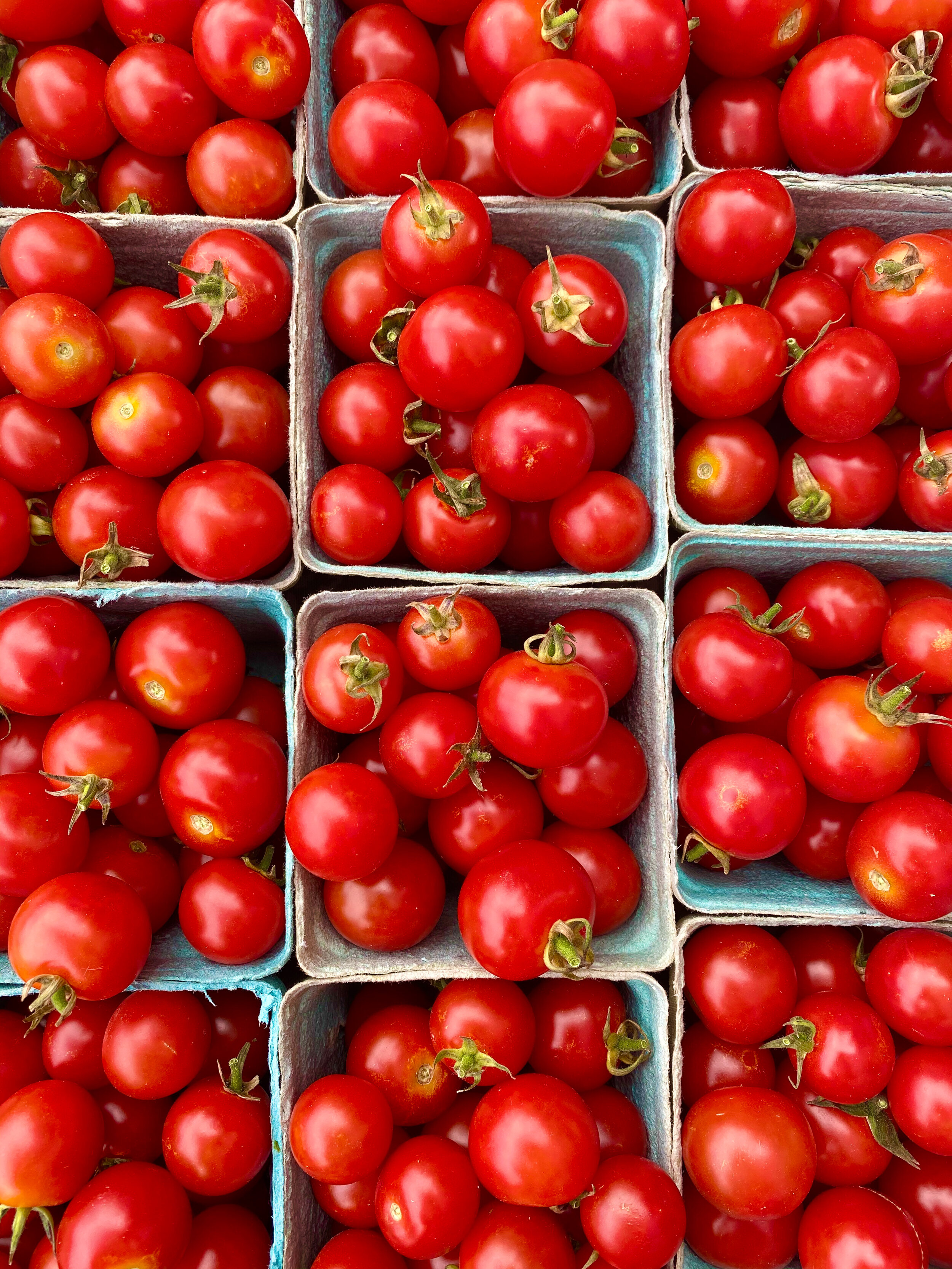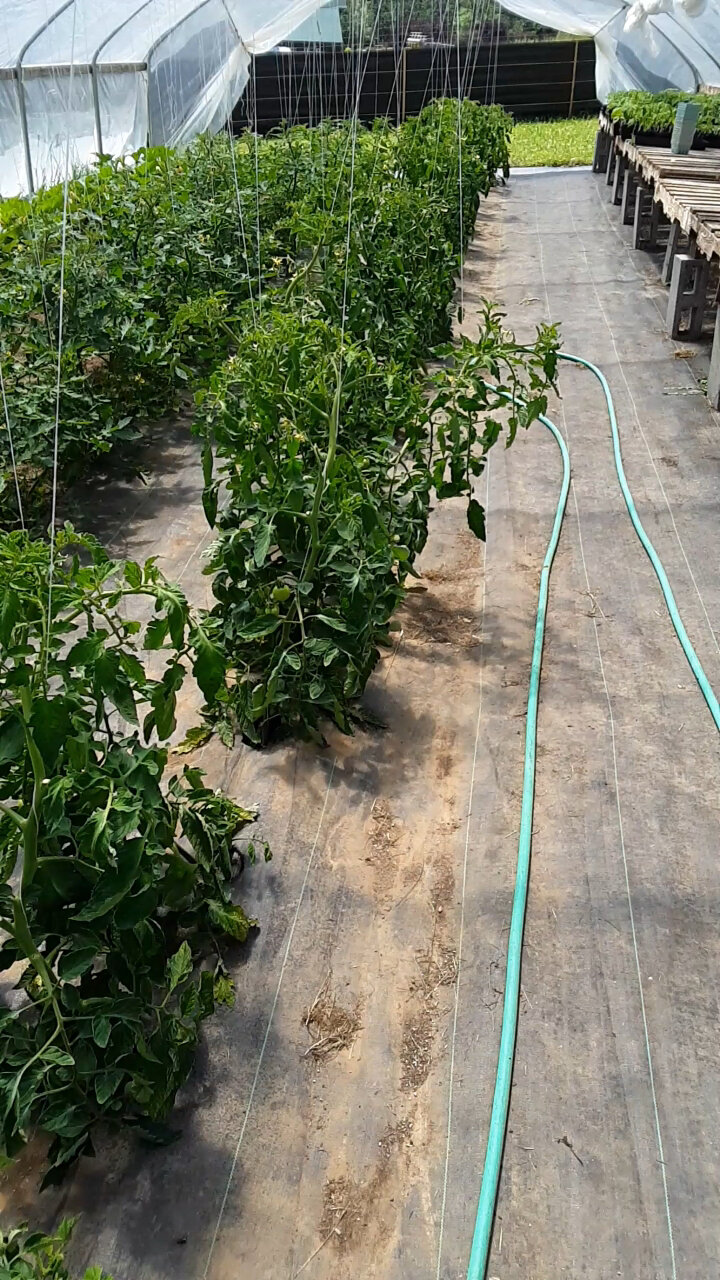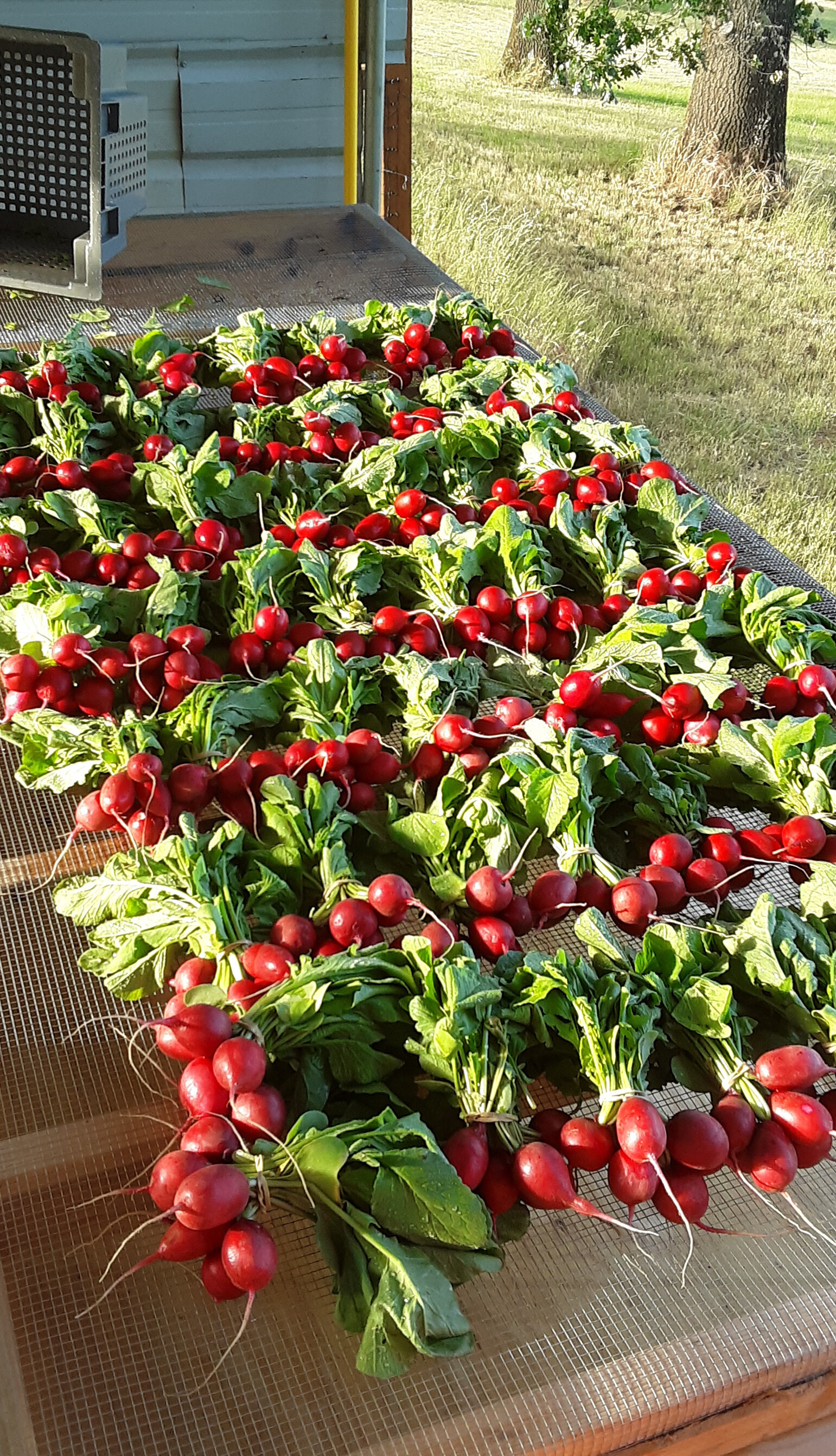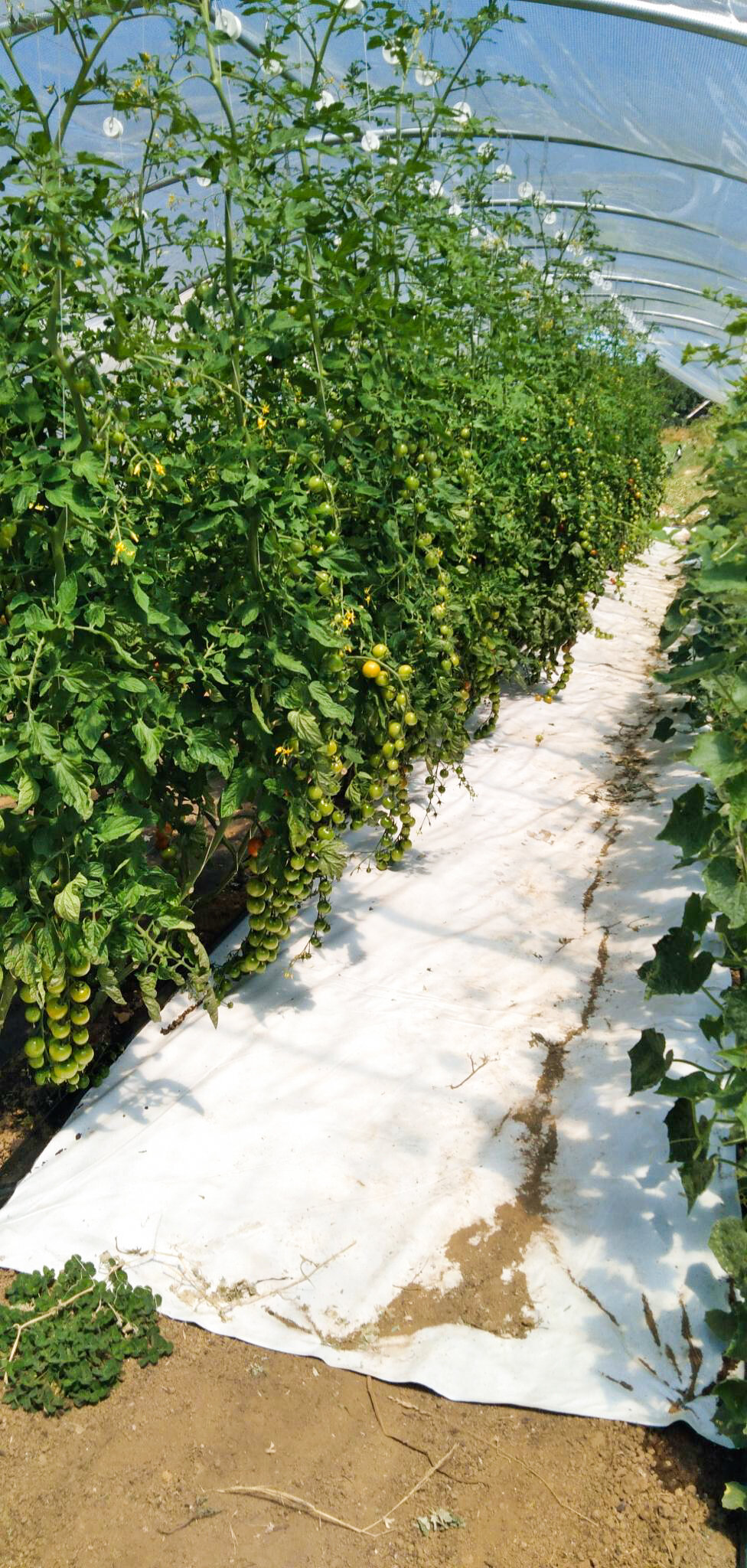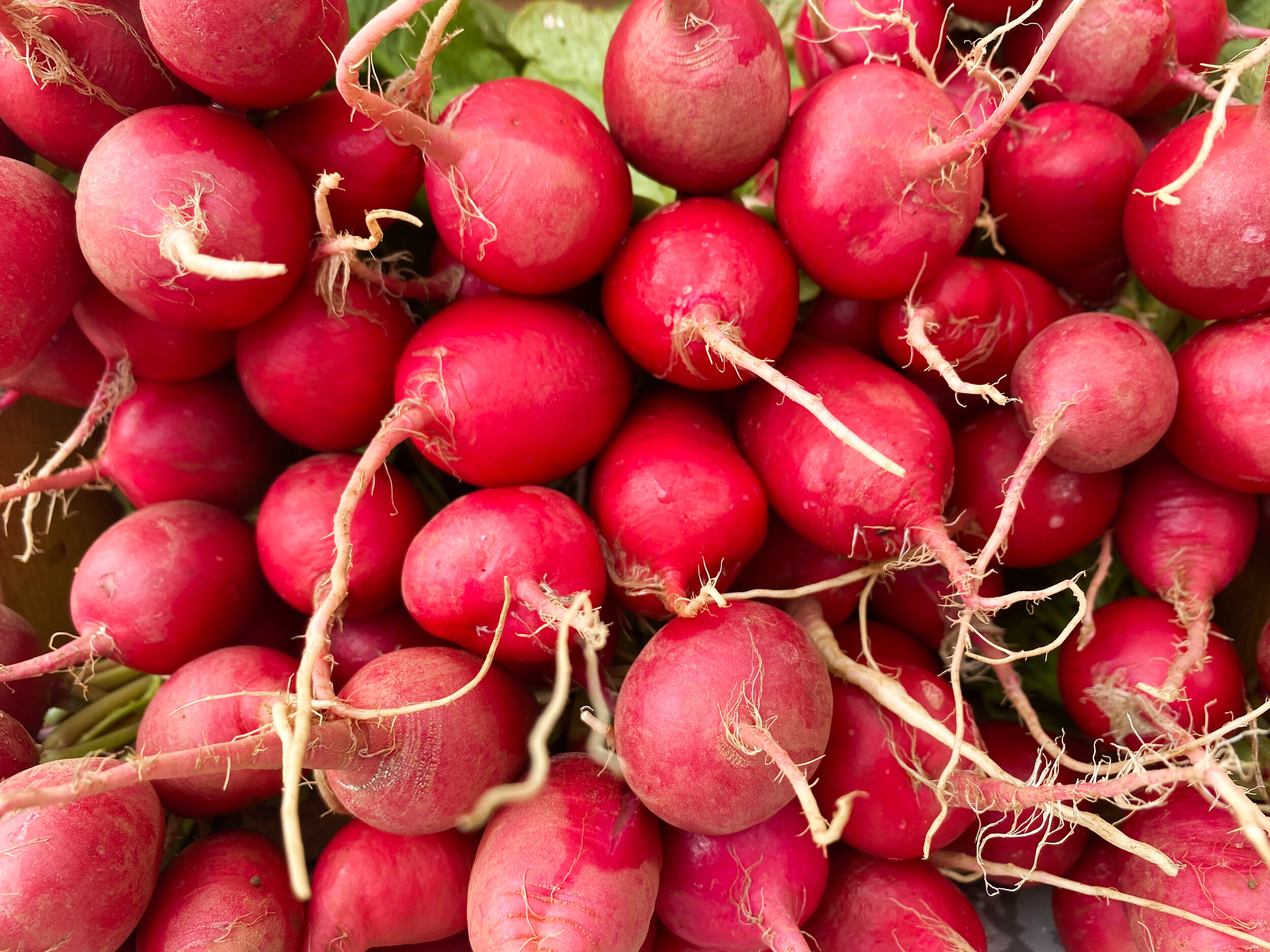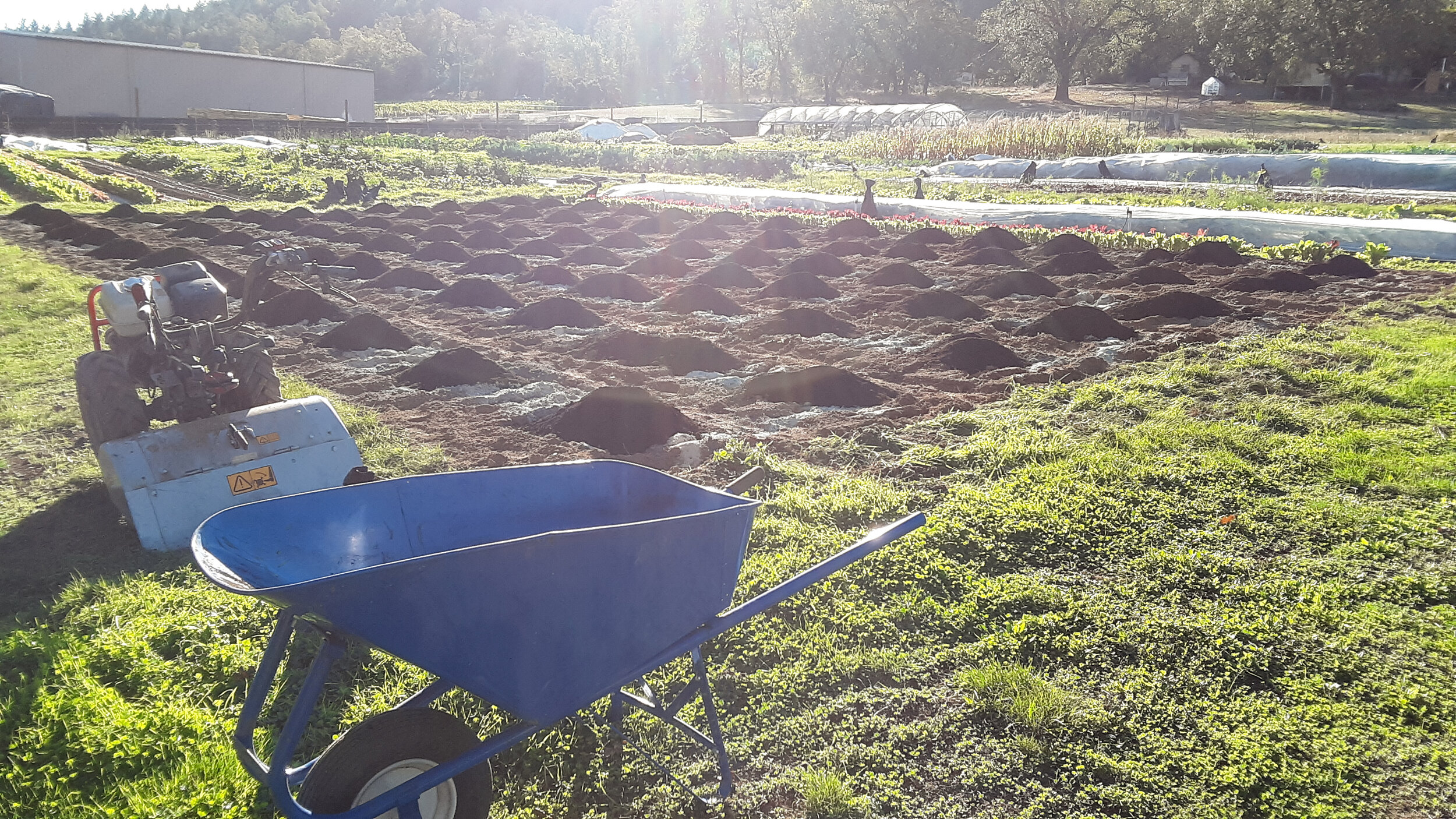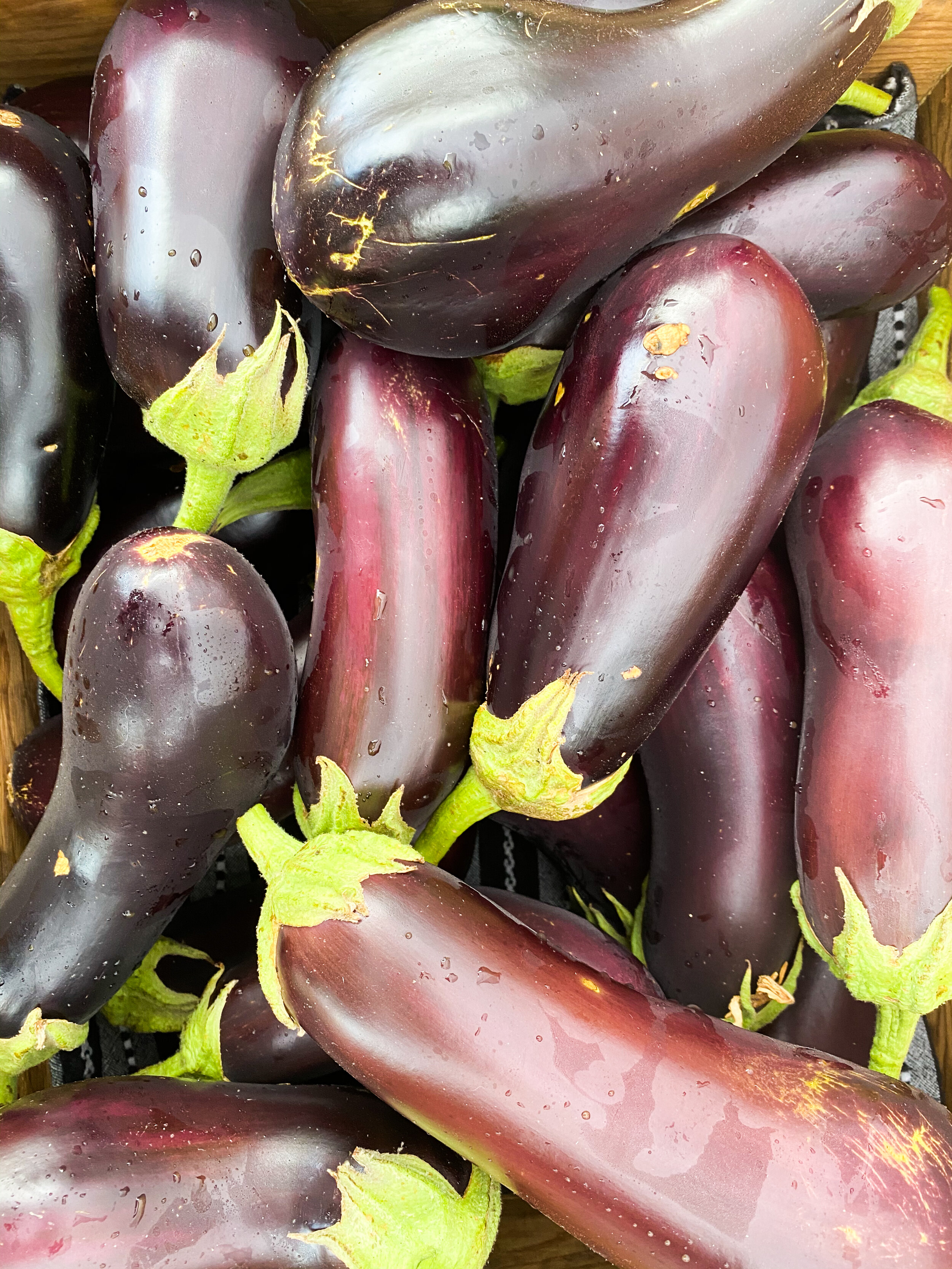The Producers: Integral Farm
This is the first installment of “The Producers” a series that works to show the faces behind the folks growing the food on our plates and stewarding agricultural lands.
Nick Baltos may have a degree in engineering, but he grows a mean butternut squash. Seriously, I can’t stop thinking about this squash! After talking to Nick and learning about Integral Farm, the farm he runs with his wife, Krystal, these truly unforgettable squash start to make sense. Nick speaks in a quiet manner (I had to turn up the volume on my phone as we talked), and when you see him at the farmers market he steps back and lets his produce speak for itself. However, after chatting with him for a while,the effort and care that he puts into growing food for his community and caretaking the land they grow on becomes crystal clear. Nick understands how each vegetable he grows feeds the community, but also has a role in changing the land and the way we look at food for the better. My email inbox contains paragraphs from Nick detailing the sustainable practices used on their farm, the energy exchange involved in farming with big machines, and why he’s chosen to farm the way he does. I’ll save those paragraphs for a later date (I may be trying to get Nick to write his own article someday…) but for now I hope you’ll enjoy this peek into the life of a farmer, and the way every decision on his small farm is influenced by big ideas around sustainability.
GG: Tell us a bit about your farm: Where are you located? What do you sell? Where do you sell? How long have you been farming?
Nick: Integral Farm is in the Umpqua Valley near Roseburg, in southern Oregon. It is a family operation run by my wife, Krystal, and me with some seasonal help from my dad. We grow a mixed vegetable garden with around 40 different crops each year. Some of our favorite crops to grow are root vegetables: carrots, radishes, turnips, and beets. No matter how many times you’ve done it, there’s something fun about pulling a root vegetable out of the dirt! Currently, our garden covers an area of around one acre. We are also in the process of establishing a small fruit and nut orchard on the farm. We make a point to farm with minimal inputs and we are certified naturally grown, which is similar to certified organic. Our vegetables are sold through a CSA that runs for 25 weeks per year and at a farmers market seven miles from the farm. We just finished our second year as professional farmers.
GG: That is so exciting! How did you get into farming?
Nick: Sometimes we wonder that ourselves! Before we started farming, we were enthusiastic home gardeners, and we had an interest in the health benefits of food. We were always wishing we could grow a bigger fraction of our diet, but we were pretty limited with space and the short growing season in our location at that time. I was reading a lot of books about gardening and books written by people who live off the land, but that wasn’t a path we were going to follow. One day my wife bought me some books written by small market-farmers and the hook was set. We started planning for a move to Oregon and starting a farm. Preparations to start the farm were a bit daunting. Even though we were familiar with sowing seeds, growing transplants, weeding, harvesting, etc., the significant increase in our scale forced us to rethink so many things that we thought we knew. Thankfully, there are many small-scale farmers in the world who are very generous with their knowledge and techniques. Honestly, we learned enough to start farming by reading books and watching YouTube videos.
GG: And what does sustainable farming look like to you on your farm?
Nick: Sustainability can refer to so many important aspects of a farm – a sustainable farm should support the local ecosystem, minimize waste of resources, build healthy soil, provide a living wage to its workers, bring those workers happiness, etc. It can also be very difficult to assess the sustainability for a particular farming practice because things are so interconnected and complicated. I find that it can sometimes be dizzying and overwhelming to think about sustainability, but in the end it comes down to a simple principle: anything sustainable has to produce as much or more than it consumes. If the farm consumes the soil organic matter, it should produce a commensurate amount. If the farm gives me heartache (and it does some days!), it should produce commensurate happiness. If the farm consumes my energy through work, it needs to provide me with food to replace that energy.
We currently do several things that we think make our farm sustainable. We try to run a human-powered farm as much as we can; much of the day-to-day work is done with hand tools and passive processes. We promote fertility by using compost and integrating nitrogen fixing cover crop residues into the soil. We plant a diversity of crops and use crop rotation to suppress pests and soil-borne disease.
GG: And what kinds of things do you consider when making decisions on the farm?
Nick: We have made a series of structural decisions regarding how we want to farm and these decisions guide us through the day-to-day operation of the farm.
First, we want to keep the farm small and simple. This decision made land acquisition much easier for us because we can farm on hilly land that is poorly suited to mechanized farming. We also get the most out of our land because we don’t need to make room to maneuver a tractor within the gardens. One major implication of growing on a small farm is that our marketing outlets are limited. It is unlikely that we will ever make a lot of sales to grocery stores so instead we focus of marketing direct to consumers.
Second, we want to stick to doing what we are good at – growing food instead of managing farm workers. We are dedicated to running the farm as a family operation, which means that labor will always be a constraint. This affects which crops we grow, how much of them, and what kinds of scale-appropriate tools and techniques we use.
Third, we want to be a CSA farm that also sells to market and restaurants, not the other way around. This means that we will grow a diversity of crops throughout the season to serve the core of our business. It might be most profitable for us to plant our entire one acre garden in a single crop, but putting all of our eggs in one basket would add risk.
GG: Do you view your farm as part of a larger system?
Nick: The most important system for our farm is the network of local growers who share knowledge and sometimes equipment and who collaborate to make our local farmers market a success. I think that in many ways, small farms act independently and there are a lot of benefits when food production is decentralized, especially in distribution. By selling directly to customers, we are able to keep more of the revenue from our veggies. Without our farm-direct customers, I don’t think we would be able to prioritize sustainable practices the way that we do.
GG: Do you think sustainable food is accessible for everyone in today’s world?
Nick: The short answer is no. In fact, there seem to be plenty of places where any kind of fresh food is inaccessible, but I think that many Americans do have access to sustainable food if they are willing to seek it out. I think the best options to access sustainable food are through home gardening and supporting local sustainable farmers.
GG: And what does the ideal food system look like for you? Are there issues that you think are currently being overlooked?
Nick: I think I could write a whole book and still not answer your question satisfactorily. What I can say for sure is that our society has spent most of the last 100 years moving away from a more ideal food system and, despite a lot of talk about the topic, I’m not sure if we have even started moving back toward it yet. There are a number of problems with our current food system and as I mentioned before, I think the answer to many of these problems is to decentralize food production. Unfortunately, that answer is almost ridiculous when you consider how much has been lost during our century-long march toward a centralized food system. Pre-WWI, subsistence farming was still prevalent in America. Parents taught their children not only how to grow food, but how to save seeds, how to preserve the harvest, how to cook thefoods that they grew, skills for animal husbandry, and myriad other nuanced lessons about that particular place’s climate and ecosystem. Today very few people possess a deep understanding of these subsistence farming skills – partly because there are very few people who could teach them and mostly because people have no need for such skills. Furthermore, local infrastructure for a community-based food system no longer exists. Things like the local grain mill are relegated to a museum if they still exist at all. So while I say that decentralization is the ideal, I think we are going to need to find a middle ground between where we came from and where we are today.
I can tell you that I sometimes feel defeated when I think about the hugeness of our nation’s food system and the smallness of my impact. It’s easy for me to imagine that there will be a big solution to match this big problem but, from my perspective, the only solution is for people on an individual basis to work toward sustainability.
Of course our household is nowhere near perfectly sustainable with regard to our food, but we do a variety of things that I think move us toward sustainability. Clearly we grow a lot of our own food and we also buy farm-direct products from other local producers. For seasonal products, we preserve what we will need for winter by freezing, canning, or drying. When buying dry goods such as flour, rice, beans, or oats we try to find local or at least regional suppliers who use sustainable practices.
GG: Thank you so much for your time talking to us. Finally, we’re wondering — what is a favorite recipe that you are loving lately?
Nick: It’s soup season at our house and it’s early enough in the winter that we’re still excited about it. Here’s one of our favorite soups:
A chopped onion
A few cloves garlic
About 4 cups of chopped veggies (radish, carrot, butternut squash, fennel, turnip, etc)
6 cups broth
1 jar tomato sauce or diced tomatoes – about 2 cups
1 cup quinoa
1.5 cups white beans (we use navy beans)
Herbs
A big handful of chopped kale
Sauté the veggies in oil, add the tomatoes, broth, and quinoa. Simmer for about 20-30 minutes until the quinoa is ready. Put in a few bay leaves while it simmers if you like. Add the beans, about 2 teaspoons of whatever herbs you like (thyme, sage or oregano are all good as are many others), and the chopped kale and give it another 5 minutes on the stove. It doesn’t have to be heavily spiced or anything fancy. If you use high quality ingredients, this soup will be amazing. I definitely recommend finding some good broth – a bouillon cube-based broth could overpower the other ingredients in this delicately flavored soup. Serve it with cracked pepper and some freshly baked bread, put on a dollop of sour cream, mix up the veggies and herbs, try different beans, add some chili flakes if you like it hot, the options are endless.
Nick Baltos is the farmer and founder of Integral Farm near Roseburg, Oregon. We are so grateful for his time with this interview and his time spent growing amazing food and care taking the land! We are thrilled to share his voice in this space.

